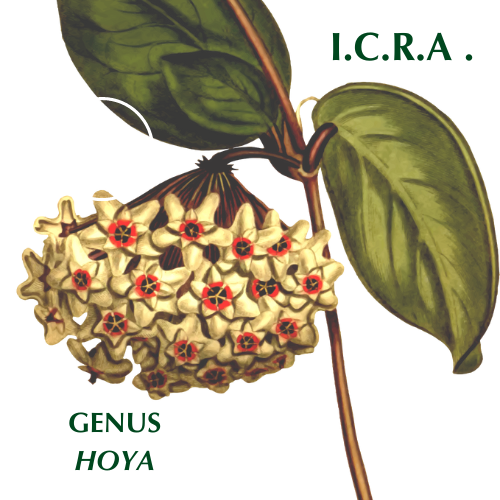Full name: Hoya ilagiorium ‘Moonlight’
Status: ‘Moonlight’ is accepted due to its status as a registered improved commercial variety approved by the Philippine National Seed Industry Council (NSIC).
It was described in a press release in the online journal of the Philippine Council for Agriculture, Aquatic and Natural Resources Research and Development by Sembrano, Danica Louise C., 2024. This press release also included a photo of an entire plant, an umbel, and an individual inflorescence spread open.
Background: ‘Moonlight’ was selected by Dr.Maria Luisa D.Guevarra & Team of the Institute of Plant Breeding at the University of the Philippines Los Baños (IPB-UPLB) as part of an ongoing project entitled Variety Development in Philippine Native Hoyas.
The name represents a soft yellow corolla color form of Hoya ilagiorium with a white corona. The number of individual inflorescence vary dramatically, and the fragrance is reported as “ginger”.
A further key and expanded description will be published when more information comes out related to this new Philippines National cultivar (improved variety), and how it was selected. I look forward to learning about it. In the meantime, it is safely conserved in the Philippines where distribution has begun. Happy growing!
Sources:
Brickell, C.D. & Alexander, C. & Cubey, Janet & David, John & Hoffmann, M.H.A. & Leslie, A.C. & Malécot, Valéry & Jin, Xiaobai. (2016). International Code of Nomenclature for Cultivated Plants.
Sembrano, Danica Louise C. (2024). NSIC approves 3 new Hoya varieties for commercialization. PCAARRD News.pcaard.dost.gov: New Hoya
Statutory registry: a registry which grants legal rights to the holder through patents, variety rights, or plant breeders rights. Seedbank: just like it sounds, important plant material is held in a seedbank for the purpose of conservation, crop preservation, genetic improvement, and other related reasons.
The term variety is used by the NSIC, as well as by most statutory registries (such as the member countries belonging to UPOV), involved in establishing legal protections related to plant material and its propagation. The use of variety in this context is not the same as the rank of variety referring to plants found and published from the wild which is the rank below subspecies. When used by a legal registry or seedbank, ‘variety’ is almost always equivalent to a cultivar, or a plant which has been selected in cultivation for one or more unique features and must be propagated by appropriate means in order to maintain those features.

